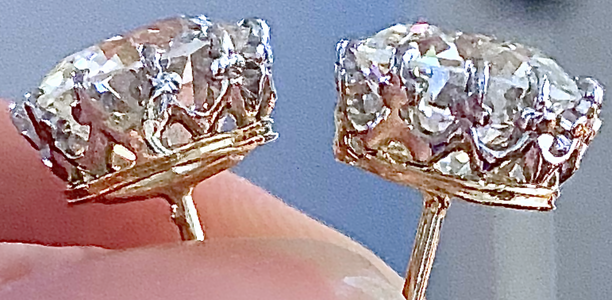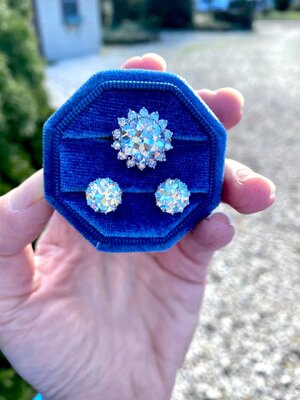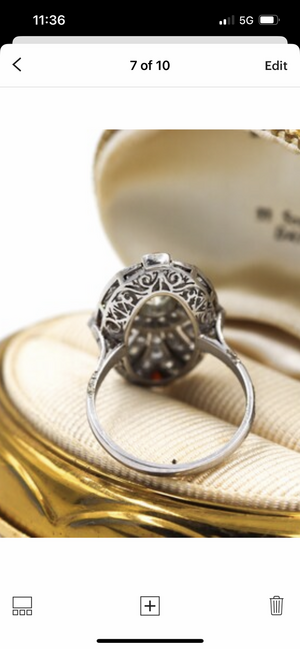Pinkmartini87
Brilliant_Rock
- Joined
- Apr 10, 2017
- Messages
- 1,315
Let’s share tips! Note: this is not to diminish antique-style pieces of jewelry, many are well made (below often lists qualities seen more in poorly made antique-style pieces), and I certainly can understand why some may choose to purposely purchase antique-style vs true antique.
Goal of this thread is to keep ourselves informed so we know can best discern what we are purchasing, which I personally feel I have a hard time with!
I’ll start:
Antique-style piece of jewelry when compared to antique jewelry (100 plus years):
-Lack of wear:
1) All intact details--no rub to milgrain/engravings, uneven solder/joints, sharp and fully intact hallmarks, pristine prongs
2) less worn stones--unless recently replaced or polished
-Poor workmanship if applicable
1) overall bulky/wrong/disproportionate feel
2) unfinished bumpy underside, porous texture
3) uneven/clumsy borders either between different metals if such is used, or different parts joined together
4) hasty/less defined details--diff from overall normal wear and tear
5) machine like uniformity suggesting little to no hand finishing
-Continuity errors aka using materials not appropriate for age (white gold in a supposedly Victorian piece instead of silver plated gold, etc), or a Frankenstein mix of setting with stone (OMC in older setting, etc).
Goal of this thread is to keep ourselves informed so we know can best discern what we are purchasing, which I personally feel I have a hard time with!
I’ll start:
Antique-style piece of jewelry when compared to antique jewelry (100 plus years):
-Lack of wear:
1) All intact details--no rub to milgrain/engravings, uneven solder/joints, sharp and fully intact hallmarks, pristine prongs
2) less worn stones--unless recently replaced or polished
-Poor workmanship if applicable
1) overall bulky/wrong/disproportionate feel
2) unfinished bumpy underside, porous texture
3) uneven/clumsy borders either between different metals if such is used, or different parts joined together
4) hasty/less defined details--diff from overall normal wear and tear
5) machine like uniformity suggesting little to no hand finishing
-Continuity errors aka using materials not appropriate for age (white gold in a supposedly Victorian piece instead of silver plated gold, etc), or a Frankenstein mix of setting with stone (OMC in older setting, etc).







![DSCN0226[1].jpg DSCN0226[1].jpg](https://www.pricescope.com/community/data/attachments/874/874928-ca330d58873b386b1ae344528097599d.jpg?hash=yjMNWIc7OG)



300x240.png)